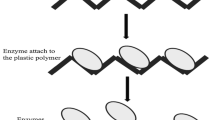Abstract
Phytoplankton samples collected for routine monitoring programmes have traditionally been preserved with fixatives before subsequent analytical procedures such as microscope-based identification, or simply to permit transport between laboratories. In recent years, to simplify identification and enumeration, the use of DNA or RNA probes coupled with the PCR assay has progressed and now represents a routine procedure for screening cultured and field samples. However, the phytoplankton cells have often still to be treated as fixed samples.
The extraction of genomic DNA from fixed cultures of Alexandrium minutum cultures was compared using two new methods based on Magnetisable Solid Phase Support (MSPS) techniques with that using three commercial kits. Genomic DNA recovery and PCR amplification were observed and the results obtained from culture samples were validated using field samples. Among the DNA extraction techniques considered, the MSPS methods provided the best results.
Similar content being viewed by others
Abbreviations
- DEAE:
-
Diethylaminoethyl group
- HAB:
-
Harmful Algal Bloom
- ITS:
-
Internal transcribed spacer
- MSPS:
-
Magnetisable Solid Phase Support
- PEG:
-
polyethylene glycol
References
Adachi M, Sako Y, Ishida Y (1994) Restriction fragment length polymorphism of ribosomal DNA internal transcribed spacer and 5.8 S region in Japanese Alexandrium species (Dinophyceae). J. Phycol. 30: 857–863.
Anderson DM, Kulis DM, Keafer BA, Berdalet E (1999) Detection of the toxic dinoflagellate Alexandrium fundyense (Dinophyceae) with oligonucleotide and antibody probes: Variability in labelling intensity with physiological condition. J. Phycol. 35: 870–883.
Bolch CJS (2001) PCR protocols for genetic identification of dinoflagellates directly from single cysts and plankton cells. Phycologia 40: 162–167.
Bruce IJ, Davies MJ, Howard K, Smethurst DE, Todd M (1996) Magnetizable solid-phase supports for purification of nucleic acids. J. Pharm. Pharmacol. 48: 147–149.
Cho ES, Parek JG, Kim HC, Rhodes LL, Chung CS (1999) The rapid differentiation of toxic Alexandrium and Pseudo-nitzschia species using fluorescent lectin probes. J. Korean Soc. Oceanog. 34: 167–171.
Davies MJ, Taylor JI, Sachsinger N, Bruce IJ (1998) Isolation of Plasmid DNA using Magnetite as a Solid-Phase support. Anal. Biochem. 262: 92–94.
Godhe A, Anderson DM, Rehnstam-Holm AS (2002) PCR amplification of microalgal DNA for sequencing and species identification: Studies on fixatives and algal growth stages. Harmful Algae 27: 1–8.
Guillard RRL (1975) Culture of phytoplankton for feeding marine invertebrates. In Smith WL, Chanley MH (eds), Culture of Marine Invertebrate Animals, Plenum Press, NY, pp. 29–60.
Guillou L, Nezan E, Cueff V, Erard-Le Denn E, Cambon-Bonavita MA, Gentien P, Barbier G (2002) Genetic diversity and molecular detection of three toxic dinoflagellate genera (Alexandrium, Dinophysis and Karenia) from French coasts. Eur. J. Protistol. 153: 223–238.
Huang J, Ge X, Sun M (2000) A modified CTAB protocol using a silica matrix for isolation of plant genomic DNA. Biotechniques 28: 432–434.
Levison PR, Badger SE, Hathi P, Davies MJ, Bruce IJ, Grimm V (1998) New approaches to the isolation of DNA by ion-exchange chromatography. J. Chromatogr. A 827: 337–344.
Marìn I, Aguilera A, Reguera B, Abad JP (2001) Preparation of DNA suitable for PCR amplification from fresh or fixed single dinoflagellate cells. Biotechniques 30: 88–93.
Penna A, Magnani M (1999) Identification of Alexandrium (Dinophyceae) species using PCR and rRNA-targeted probes. J. Phycol. 35: 615–621.
Portugal J, Waring MJ (1988) Assignment of DNA binding sites for 4′,6-diamidine-2-phenylindole and bisbenzimide (Hoechst 33258). A comparative footprinting study. Biochim. biophys. Acta 949: 158–168.
Sambrook J, Fritsch EF, Maniatis T (1989) Molecular cloning: A laboratory manual, 3 vols., Cold Spring Harbor Press, NY,(S 6.15).
Scholin CA, Marin R III, Miller PE, Doucette GJ, Powell CL, Haydock P, Howard J, Ray J (1999) DNA probes and a receptor binding assay for detection of Pseudo-nitzschia (Bacillariophyceae) species and domoic acid activity in cultured and natural samples. J. Phycol. 35: 1356–1367.
Taylor JI, Hurst CD, Davies MJ, Sachsinger N, Bruce IJ (2000) Application of magnetite and silica-magnetite composites to the isolation of genomic DNA. J. Chromatogr. A 890: 159–166.
Vila M, Giacobbe MG, Masó M, Gangemi E, Penna A, Sampedro N, Azzaro F, Camp J, Galluzzi L (2004) A comparative study on recurrent blooms of Alexandrium minutum in two Mediterranean coastal areas. Harmful Algae (in press).
Author information
Authors and Affiliations
Corresponding author
Rights and permissions
About this article
Cite this article
Bertozzini, E., Penna, A., Pierboni, E. et al. Development of new procedures for the isolation of phytoplankton DNA from fixed samples. J Appl Phycol 17, 223–229 (2005). https://doi.org/10.1007/s10811-005-2130-5
Received:
Revised:
Accepted:
Issue Date:
DOI: https://doi.org/10.1007/s10811-005-2130-5




